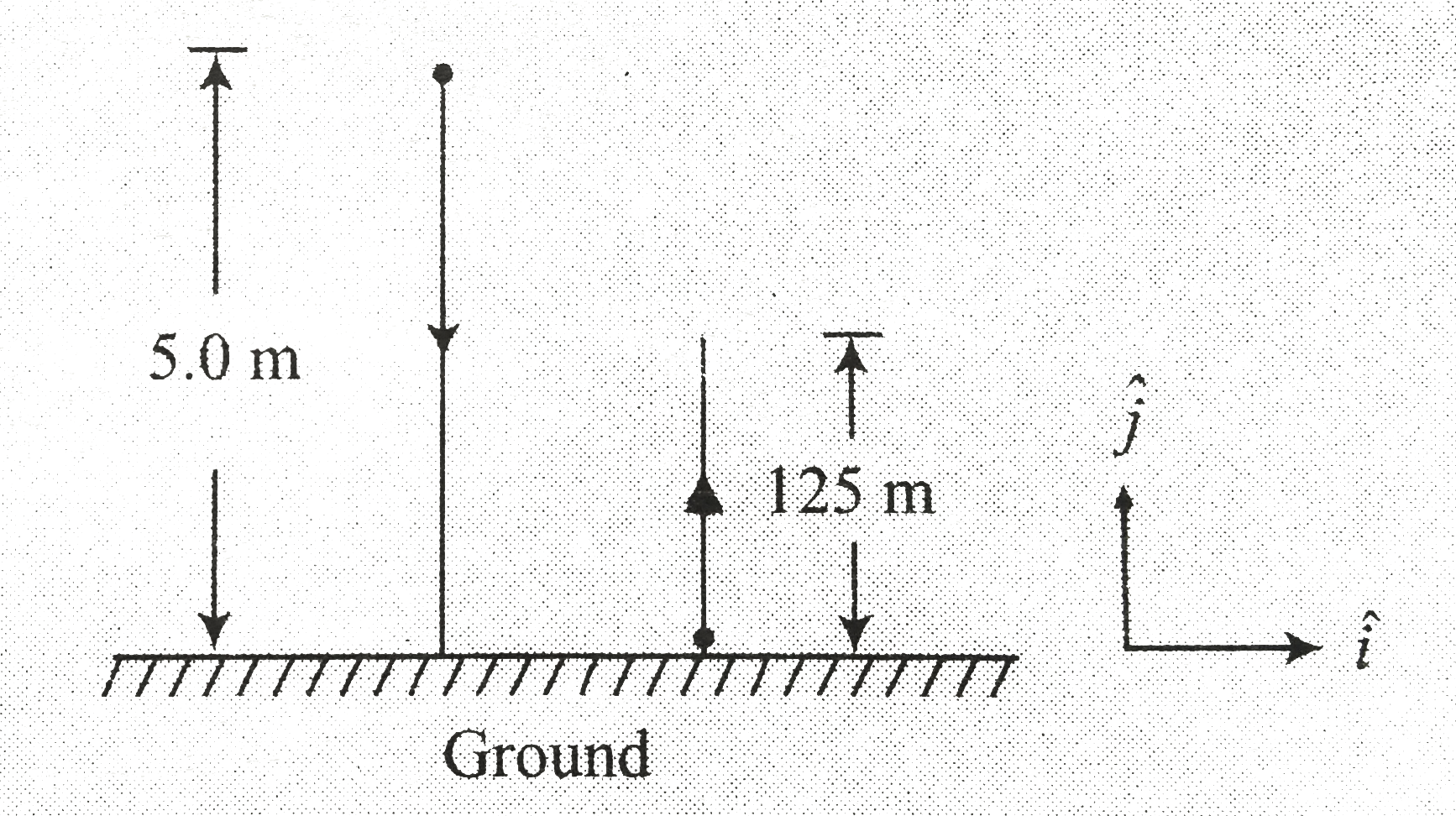A steel ball is dropped on a hard surface from a height of 1m and rebounds to a height of 64cm. The maximum height attained by the ball after nth bounce is (in m)
(a) (0.64)2n
(b) (0.8)2n
(c) (0.5)2n
(d) (0.8)n
The correct Answer is:B
To solve the problem, we need to find the maximum height attained by the steel ball after the nth bounce. The ball is dropped from a height of 1 meter and rebounds to a height of 64 cm after the first bounce.
1. Identify the Initial Height and Rebound Height:
- The initial height (H) from which the ball is dropped is 1 meter (100 cm).
- The height to which the ball rebounds after the first bounce (h) is 64 cm.
2. Calculate the Coefficient of Restitution (e):
- The coefficient of restitution (e) is defined as the ratio of the rebound height to the original height.
- We can express this as:
e=√hH=√64 cm100 cm
- Simplifying this gives:
e=√0.64=0.8
3. Determine the Height After nth Bounce:
- The height attained after the nth bounce can be calculated using the formula:
hn=e2n⋅H
- Substituting the values we have:
hn=(0.8)2n⋅1 m
- This simplifies to:
hn=0.82n m
4. Final Expression:
- Thus, the maximum height attained by the ball after the nth bounce is:
hn=0.82n m
Conclusion:
The maximum height attained by the ball after the nth bounce is 0.82n meters.
- The initial height (H) from which the ball is dropped is 1 meter (100 cm).
- The height to which the ball rebounds after the first bounce (h) is 64 cm.
- The coefficient of restitution (e) is defined as the ratio of the rebound height to the original height.
- We can express this as:
e=√hH=√64 cm100 cm
- Simplifying this gives:
e=√0.64=0.8
- The height attained after the nth bounce can be calculated using the formula:
hn=e2n⋅H
- Substituting the values we have:
hn=(0.8)2n⋅1 m
- This simplifies to:
hn=0.82n m
- Thus, the maximum height attained by the ball after the nth bounce is:
hn=0.82n m
The maximum height attained by the ball after the nth bounce is 0.82n meters.
Topper's Solved these Questions
- CENTRE OF MASS, LINEAR MOMENTUM AND COLLISIONBook:DC PANDEY ENGLISHChapter:CENTRE OF MASS, LINEAR MOMENTUM AND COLLISIONExercise:Level 1 Subjective
Explore 32 Videos
- CENTRE OF MASS, LINEAR MOMENTUM AND COLLISIONBook:DC PANDEY ENGLISHChapter:CENTRE OF MASS, LINEAR MOMENTUM AND COLLISIONExercise:Level 1 Subjective Questions
Explore 1 Video
- CENTRE OF MASS, LINEAR MOMENTUM AND COLLISIONBook:DC PANDEY ENGLISHChapter:CENTRE OF MASS, LINEAR MOMENTUM AND COLLISIONExercise:Level 1 Assertion And Reason
Explore 15 Videos
- CENTRE OF MASS, IMPULSE AND MOMENTUMBook:DC PANDEY ENGLISHChapter:CENTRE OF MASS, IMPULSE AND MOMENTUMExercise:Comprehension type questions
Explore 15 Videos
- CIRCULAR MOTIONBook:DC PANDEY ENGLISHChapter:CIRCULAR MOTIONExercise:Medical entrances s gallery
Explore 19 Videos
Similar Questions
A ball is dropped from a height of 5 m, if it rebound upto height of 1.8 m, then the ratio of velocities of the ball after and before rebound is :
View SolutionA rubber ball of mass 50 g falls from a height of 5m and rebounds to a height of 1.25 m. Find the impulse and the average force between the ball and the ground if the time for which they are in contact was 0.1s

View Solution
Knowledge Check
In the question number 62. the maximum height attained by the ball is
A11.25 mB48.2 mC23. 5 mD68 m
A ball falls on the ground fro a height of 2.0 m and rebounds up to a height of 1.5 m. Find the coefficient of restitution.
View SolutionA ball is dropped on the ground from a height of 1m. The coefficient of restitution is 0.6. The height to which the ball will rebound is
View SolutionA ball dropped from a height of 2 m rebounds to a height of 1.5 m after hitting the ground. Then fraction of energy lost is
View SolutionA ball dropped on to the floor from a height of 40 m and rebounds to a height of 10 m. If the ball is in contact with the floor for 0.02 s, its average acceleration during contact is
View SolutionA ball is dropped on the floor from a height of 10m. It rebounds to a height of 2.5 m if the ball is in contact with floor for 0.01 s then the average acceleration during contact is nearly
View SolutionA ball is dropped on the floor from a height of 10m. It rebounds to a height of 2.5 m if the ball is in contact with floor for 0.01 s then the average acceleration during contact is nearly
View SolutionA tennis ball is dropped on the floor from a height of 20m. It rebounds to a height of 5m. If the ball was in contact with the floor for 0.01s. What was its average acceleration during contact? (g=10m/s2)
View Solution
